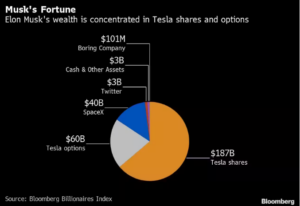There are over 1,215 Unicorn startups in the world today. With the changing customer outlook and innovative opportunities laid down by emerging technologies, the current age is considered best for investment in startups. However, many ups and downs are part of startup investments along the road. Experts say such challenges arise due to insufficient knowledge or ineffective planning. This comprehensive guide aims to eradicate such uncertainties and equip startup investors with a deeper understanding of investment strategies to maneuver the global marketplace confidently. Let’s start to discuss Your Startup Funding Roadmap.
Here’s what to look forward to in this guide:
- The Basics of Startups Funding
- Understanding the Global Marketplace
- Types of Startup Investments
- Assessing Investment Opportunities
- Risks, Mitigation Strategies, and Diversification
- Venturing into the Realm of Startups Funding
The Basics of Startups Investing
Startup Funding: The Fuel of Innovation and Growth
Startups require resources for various stages of growth like expansion, marketing, product development, etc. However, investing in a startup comes with its share of risk. Here’s a clear understanding of the stages involved in startups funding:
Stage I: Every startup begins with an idea and is mainly funded with seed money, either from founders, friends, or family (FF&F).
Stage II: Once the company moves into operations and generates initial revenue, it moves from seed to bonafide startup. At this point, the founders start pitching to international angel investors. Angel investors are private individuals who specialize in investing in early-stage startups and extend more than financial support. International angel investors offer wisdom, guidance, and unwavering support in your journey.
Stage III: Once the startup gains momentum and starts reinvesting revenue back into the company for growth, venture capital steps in.
Venture capital can come from:
- An individual
- A private partnership
- A pooled investment fund
Most venture capitalists require an active advisory role in the new company and often settle on the company’s board.
Alphabet Inc., now known as Google, is one of the best examples of a successful startup. Seeded by FF&F (founders, friends, and families) as a startup in 1997 with $1 million, the search firm was rapidly growing and attracted $25 million in venture capital funding. Two VC firms acquired about 10% each of the company. Google’s IPO in August 2004 raised over $1.2 billion for the company and gave a return of almost 1,700% to the original investors with nearly half a billion dollars.
Diversification is a key principle in investing.
There’s a saying, ‘Don’t put all your eggs in one basket,’ which is what diversification is about in startup funding. Diversifying your startup investment means spreading your investment capital across multiple startups. It reduces the overall risk of your investment portfolio as the investor does not solely rely on the success of a single company.
The Key Takeaway
- Investing in new companies comes with an extreme level of risk.
- It requires addressing a whole host of unique risk factors.
- Allocate your portfolio to a mix of different investments.
Understanding the Global Marketplace
The impact of globalization on funding
Globalization has intensified the spread of knowledge and technology across borders. Technology has democratized entrepreneurship by reducing the financial barriers to starting a company, boosting innovation and productivity, and making global investing more accessible.
With an increased capacity for access to global markets, the number of firms wanting funding has increased, making the startup funding world cut-throat. This is more true for early-stage businesses as it is difficult for young startups to find a track record to show their worth to investors.
Easy access to more investors
Despite the competitiveness, technology has opened access to many more investors. Increased connectivity allows entrepreneurs to reach out to investors from across the globe. Digitization allows for ease of transferring money, staying connected to give quality advice, and offering other essential resources.
Investing in global startups has plenty of benefits, but some challenges remain. With international affiliations come cultural and legal differences and increased scrutiny.
- Different countries have different rules, regulations, and legal frameworks. The same rules that apply to a startup’s home country might not apply to where the investor is from.
- Cultural differences between people from different backgrounds can negatively affect investor relations.
- A wider pool of investors brings an increased level of inspection. Investors today demand due diligence, and startups must be able to match their level.
Broadening of funding
Globalization has also led to different types of funding sources. Earlier, startups had to make do with local investors. With the surge of global investments, startups can dive into various funding sources, including
- Self Funding
- Crowdfunding
- Loans
- Grants
- Private equity funds
- Incubators and Accelerators
The Key Takeaway
- Due to globalization, the resources it takes to build startups have dropped drastically.
- Investing in global startups has its share of benefits and challenges.
- With the surge of global investments, startups can dive into various funding sources.
Types of Startup Investments
Funding that aligns with your goals:
- Self Funding
Self-funding is when you provide the funding you need for your startup. It could be from
- Your savings
- Bootstrapped, where you use the early startup revenue to keep the business running
- Credit card to help you get the resources and offer backup cash flow
- Barter your product or services to expand your business
- Crowdfunding
Crowdfunding is a simple way to ask your community to raise funds for your new venture. It is raising money online through online platforms. Crowdfunding has introduced the new generation of digitally literate people to startup funding by pairing them with social media platforms such as Facebook, Instagram, Twitter, Reddit, and LinkedIn.
Equity crowdfunding is different from donation crowdfunding. Once reserved only for high-net-worth individuals, equity crowdfunding has effectively democratized the venture capital and angel investing spaces.
- Garnering a compound annual growth rate of 17% between 2023 and 2028, the global crowdfunding market is determined to reach USD 34.6 billion by 2028.
- As far as transactional value is concerned, it is projected to reach $1.05 billion in 2021 and $1.2 billion by 2025.
- The use of social media as a source of free-of-cost promotion is notably driving crowding market growth.
- Loans
You can take loans to fund your startup. Whether or not you qualify for a loan depends on the lender, amount, and type of loan. You can take a loan from
- Microlenders
- Friends and family
- Personal business loans
- Grants
Grants are gifts or financial awards that need not be paid back. It could be from a government, nonprofit organization, or corporate.
- Private Equity Firms
Private equity firms hold a stake in the business and act as mentors to help make your startup successful.
Key Takeaway
- There are more investment vehicles available- SAFEs (Simple Agreement for Future Equity), Convertible Notes, KISS Notes (Keep it Simple Security), and SPVs (Special Purpose Vehicles).
- Providing new opportunities for growth and collaboration, equity crowdfunding has become more accessible to both investors and businesses.
- Angel investors are seed-stage financiers offering mentorship for equity. Venture capitalists invest substantial capital into later-stage firms.
Assessing Investment Opportunities
If you are looking for funding, it usually begins with a seed round and continues to Series A, B, and C rounds. But before that, an investor needs to evaluate your startup to understand how much of it is a risk or profitability factor.
Evaluating a startup
Investors seek certain characteristics in a company before investing. Besides looking at how you differ from your competitors, investors also look at the business owner’s approach to problem-solving and your market penetration strategies.
- Product or service that stands out
- Competent team
- Defined possibility for growth
- Sound financial strategy
- Strategies for using investment funds
- A secure exit plan
Early-stage due diligence (DD)
Due diligence refers to the investigative process of reviewing a company’s economic, legal, fiscal, and financial aspects when planning a joint venture or investment. It means the investors go through a particular standard of care before entering into business agreements. There are several factors to consider when conducting due diligence on a company.
- Business and Management
- Risks
- Marketing Strategy
- IP and Technology
- Financials
- Fundings
- Legal
- Exits and Payoffs
- Jurisdiction
Researching the company and industry
To identify potential risks and evaluate potential growth, investors conduct thorough research on the company, the industry, and the market. This includes closely examining the management team responsible for strategizing business functions. This means taking the time to research the company, its products or services, and its competitors. Investors can make more informed investment decisions by researching the product or service and its competitors.
Key Takeaways:
- Evaluating a startup is the first step towards investment.
- Due diligence involves collecting data, including looking into the economic, legal, fiscal, and financial aspects.
- Investors thoroughly research your team, market, and competitors for potential startup funding.
Risks, Mitigation Strategies, and Diversification
- Evaluating the risks
The first and foremost risk associated with investing in startups is the potential for financial loss. There is no guarantee that the startup will be a success. Besides losing investment, there are more risks involved for an investor.
- Investing in a bad idea
- Risk of not being paid back
- Dilution of ownership
- Regulatory risk
- Market risk
- Mitigating risk and protecting investments
The best way to mitigate risk for an investor is to understand their risks and build strategies to minimize them. It is important first to identify and then prioritize risks.
- Do a thorough research.
- Perform due diligence
- Diversify investment portfolio
- Diversify your investment portfolio
It is important to have a diversified portfolio. In terms of
- The number of companies in which you invest
- The types of investments you make
- Diversification by industry, geography, and stage of development

Besides being one of the most critical risk management strategies, diversification also reduces the overall risk of your portfolio. Investors deliberately seek different colors of startups to mitigate risk; the more diversified their investment, the less risk there is on the overall portfolio. If one startup fails, the other investments can help offset losses.
Key Takeaway
- Identify common risks associated with startup investments.
- Put in place strategies for mitigating risks and protecting investments.
- Build a well-rounded, diversified startup investment portfolio.
Venturing Into The Realm Of Startups Funding
At its core, investing is about deploying funds and generating profits in return. However, startup funding significantly differs from traditional investments due to its high-risk, high-reward nature.
Are you ready to navigate the global marketplace of startups funding?
As you now know, early-stage funding can be the perfect way to get a business off the ground and running. But navigating the global marketplace of startup funding can be challenging. Here are a few tips to help make you ready to start your investment journey.
- Know your industry, company, team, market, competitors
- Keep a tab on all the documents, such as financial statements, legal documents, customer contracts, etc., with due diligence
- Create strategies to mitigate risk
- Diversify your portfolio
- Stay on top of market trends
Conclusion
Startup funding stands at the intersection of innovation and risk, offering the potential for substantial rewards for those willing to navigate its complexities. By understanding the risks, conducting thorough due diligence, diversifying investments, and leveraging available resources and platforms, beginners can embark on their journey into the dynamic and transformative world of startup funding.
Yes, the voyage entails risks. Yet, isn’t the pursuit of the unknown fueling our passion? Diversification and due diligence become your compass and map, guiding you through uncharted waters and mitigating risks while embarking on new adventures.
Investment isn’t just about money; it’s about shared belief, collective growth, and transformative partnerships. Your vision can reshape industries, impact lives, and transcend boundaries. It’s time to unlock your potential, embrace the rhythm of startup funding, and forge ahead into a horizon brimming with promise.
Platforms like Start3r help connect investors with unique businesses and startups for better collaboration and an innovative future. Sign Up with Start3r today!







